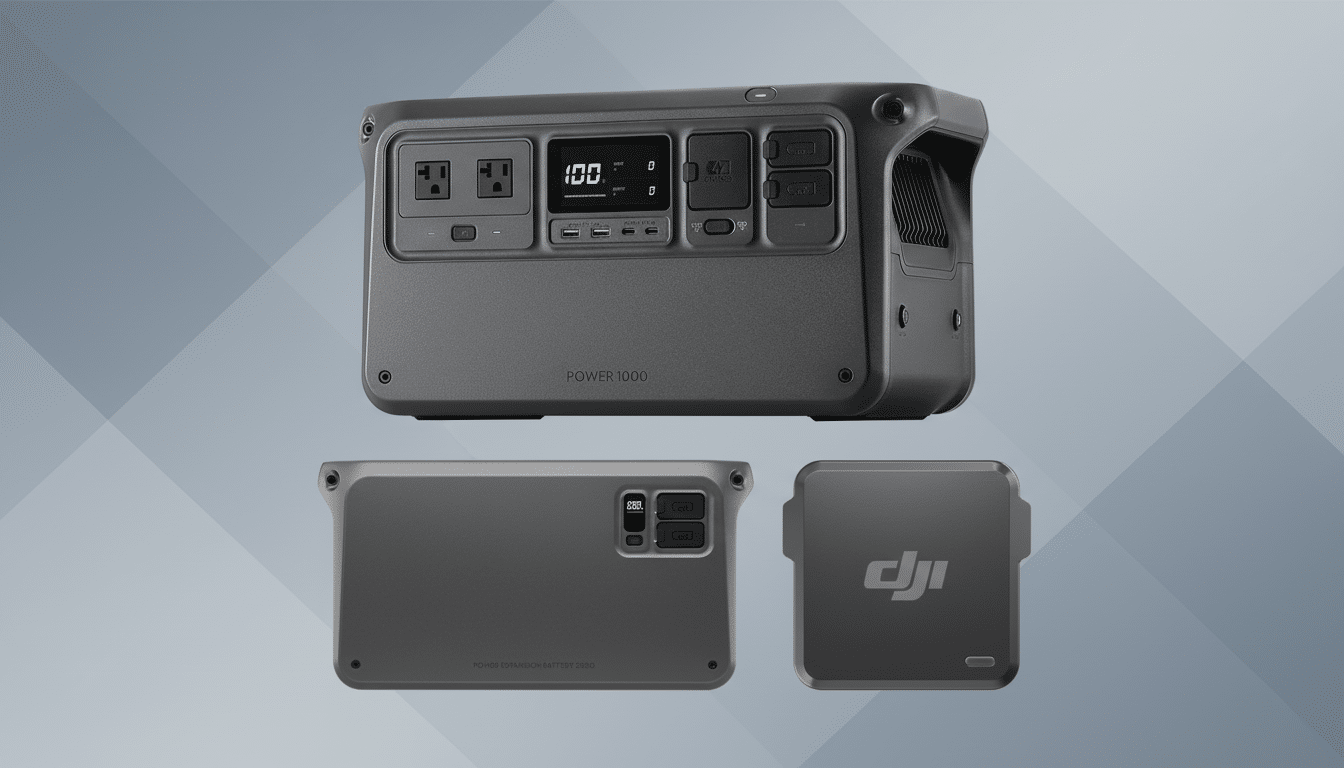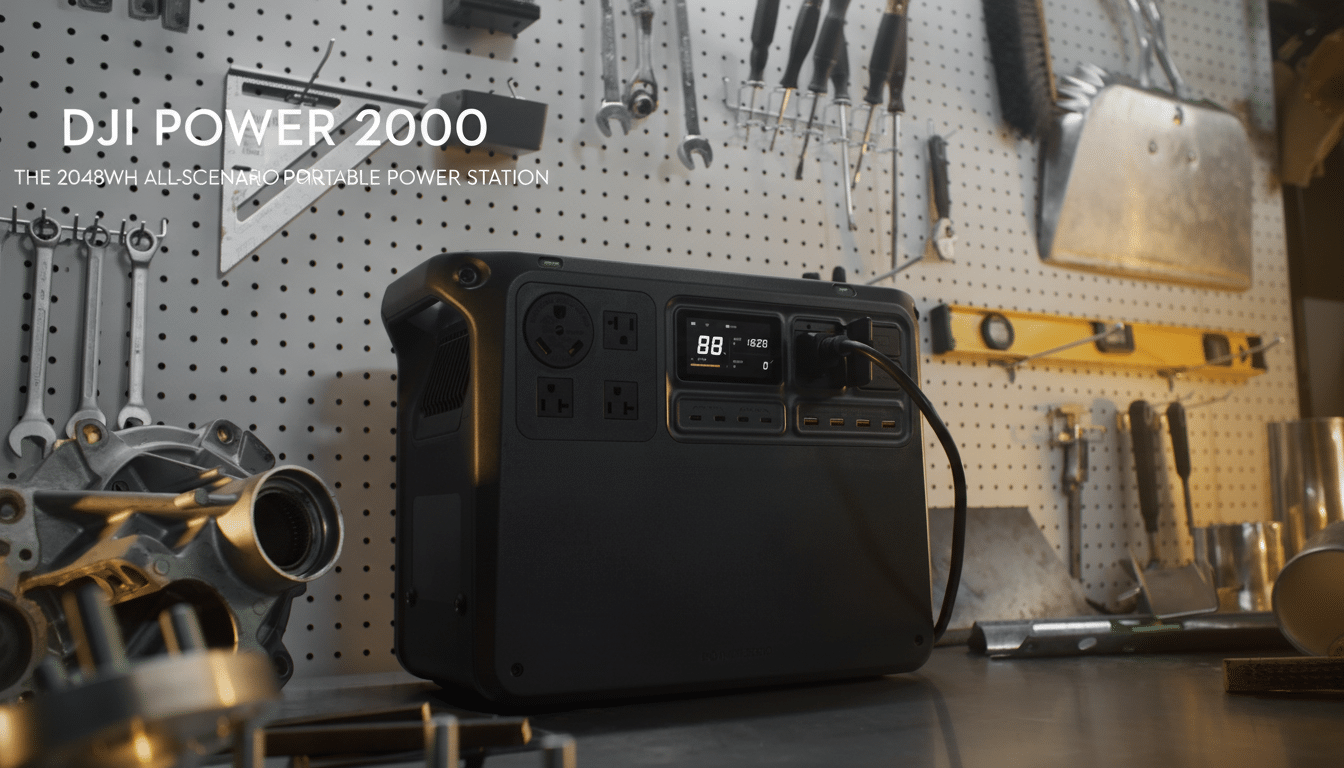If you’ve been holding out for a high-capacity, rapid-charging model that can fill in during an outage or power your off-grid weekends away, this is the standout deal to monitor.
Why This Power Station Deal Stands Out Right Now
It’s simple to see value in terms of cold, hard numbers here: Project the Power 2000’s 2,048Wh capacity on the discounted price and you’re looking at around $0.46 per watt-hour. Equivalent 2kWh-class stations from popular makes commonly cost somewhere closer to $0.65–$1.00 per watt-hour for various configurations and timing. That is to say, this markdown doesn’t simply lop a little off the top — it puts the DJI unit in a more aggressive value tier while retaining premium features.

For consumers who are weighing options, that per-Wh figure serves as a useful reference point. It is how lots of seasoned buyers gauge whether a sale is actually a really good one or just so-so. Here, however, the math backs the headline: this is just about the best power station deal at the moment for a 2kWh model featuring a solid inverter.
Power and Features That Truly Make a Difference
Under the bonnet, the DJI Power 2000 deploys an incredible 2,048Wh lithium iron phosphate (LFP) battery and is mated to a stable 3,000W AC output.
This output ceiling is sufficient to accommodate most home essentials and many power tools, and it offers a nice headroom cushion for appliances with startup surges. LFP chemistry is a significant advantage as well—research from the National Renewable Energy Laboratory has demonstrated that LFP cells typically deliver thousands of cycles prior to falling to 80 percent capacity, significantly extending life compared with older chemistries.
Connectivity is also a major plus: 15 total ports provide flexibility for laptops, phones, cameras, and small devices to stay charged from AC outlets or on the road, with dual SDC ports supporting the DJI ecosystem for creators and pilots.
A 10ms uninterruptible power supply mode also means a router or desktop will keep running for short power outages, in the kind of situation where uptime really counts. The enclosure is constructed with a fire-resistant casing and wrapped in a waterproof layer that shrugs off light rain as well as taps and bumps. Charge, input/output, and settings are easy to check with the DJI Home app.

Real-World Runtime Examples for Common Devices
Converting watt-hours to useful runtime depends on the load and inverter efficiency, but rough planning numbers are a good start. Say 85–90% available energy from the 2,048Wh pack to take into consideration conversion losses:
- An average 150W refrigerator can have a continuous running time of ~11–12 hours; given that fridges cycle on and off, most households get a full day’s coverage for daily use.
- With a CPAP machine of around 40W, the power station can last about 43 hours — lots of nights sleeping soundly without the need for wall power.
- A 10–15W home internet setup could run for roughly 115–175 hours, making sure your work and communications stay consistent even during grid hiccups.
For content creators, with two of these 100W LED panels you’d have about 8–9 hours of shoot time per pair. The 3,000W output also can accommodate short bursts from higher-draw devices — say a kettle or an induction cooktop — although such loads will deplete capacity fast.
Fast Charging and Day-to-Day Usability Details
Quick top-ups are one appealing aspect: the Power 2000 can go from empty to 80% charged in approximately 55 minutes over AC, which means you’re back up and running in no time if you have a brief window before your next outing or storm.
- Quiet compared with gas generators
- Exhaust-fume-free and indoor safe
On an emergency preparedness note, the U.S. Energy Information Administration states that most customers who experience power outages have them for a few hours or less per year, and a 2kWh-class power station spans many of these occurrences with no impact at all.
Who Should Hop On This Deal for the DJI Power 2000
- Homeowners who want a quiet backup for necessities such as refrigerators, modems, and medical devices will like the UPS feature and high output ceiling.
- Campers, vanlifers, and event organizers get the capacity they need for multi-day trips, camera rigs, and portable cooking — minus the noise or fumes of a generator.
- DJI ecosystem users receive immediate SDC support for gear charging, including app-based load management to simplify in-field workflows.
The Bottom Line on the $360 Savings for Power 2000
This is enough of a discount to make the DJI Power 2000 one very rare value: a 2kWh LFP-rated station with a pure sine inverter, rapid AC recharge, UPS capabilities, and tons of I/O. If you’ve been comparing prices per Wh and waiting for that number to get compelling, $939 gets us there.
Inventory and pricing on these does change, but for now this is one of the best power station offers available on a tested, high-capacity platform.

